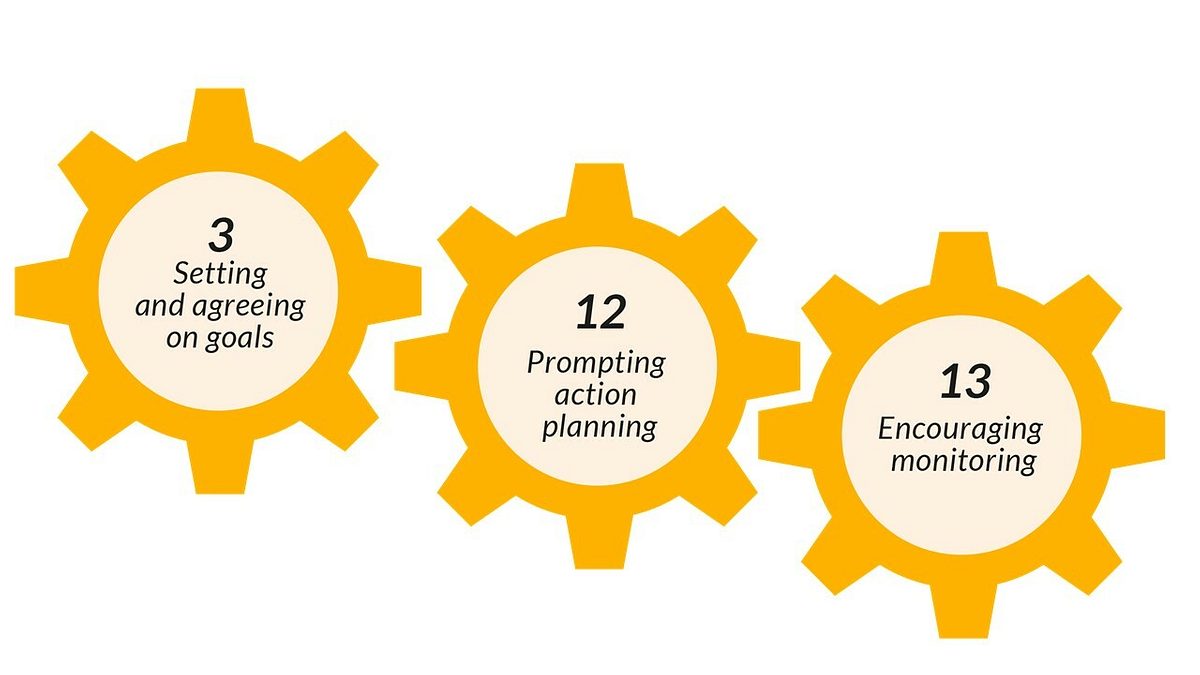Effective Professional Development
Free webinar exploring the recommendations from the EEF’s effective Professional Development guidance report


Share on:

by Bradford Research School
on the
Mark Miller is Director of Bradford Research School
Professional Development may be more effective if it establishes a method whereby teachers can monitor and record their own performance. That’s the key message from Mechanism 13 of the EEF’s Effective Professional Development guidance report.
“Self-regulation theory posits that this type of recording and self-monitoring can make effective habit formation more likely—it forces teachers to pay specific attention to their actions and the effects of these actions.”
Self Control
As we’ve seen before in this series of blogs, much of the evidence supporting claims about behaviour change comes from health. In a study on the role of monitoring in weight loss, Burke et al (2011) write, ‘In order to change behaviours, individuals need to pay adequate attention to their own actions, as well as the conditions under which they occur and their immediate and long-term effects.’
Back in education, Zimmerman (2002) identifies two processes for self-monitoring that happen in what he calls the ‘performance phase’: self-control and self-observation. Self-control is ‘the deployment of specific methods or strategies that were selected during the forethought phase.’
In relation to professional development, self-control might mean ensuring that a particular action happens, or a particular technique is deployed. It follows on from action-planning and the wider goals set. This is also where carefully developed implementation intentions will be particularly useful. See our blogs on Mechanism 3 and Mechanism 12 for the role of action planning and goal-setting.

Self-observation
Self-observation refers to ‘self-recording personal events or self-experimentation to find out the cause of these events. Self-observation moves on a little from adherence to goals, and helps facilitate a learning process. The teacher might notice that a technique is more effective in one context than another, or the phrasing of a questioning strategy can be tweaked.
This is always the part that I enjoy about learning from professional development, where you go from using a technique or approach learnt, to iterating and finding your own way of doing things.
Plan, Monitor, Evaluate
It’s clear that we shouldn’t see ‘monitor’ as something that happens in isolation. It’s part of a sequence that involves planning and evaluation. If we don’t set goals and then action plan, we have nothing to monitor. And monitoring does not only look at compliance – it feeds forward and helps us to evaluate and then make changes to our habits.
The Reflecting on PD tool from the EEF is a simple proforma that can foster this process, and would be a useful addition to PD. Download it at the end of the bog.

The document supports the process of setting actions, reflecting on the actions and consequences, before using this learning to feed into future actions. And if we’re looking for a simple way of embedding learning from PD, this is not a bad approach.
See the full list of mechanisms below, and the other blogs in the series.

Mechanism 1: Effective Professional Development: Managing Cognitive Load
Mechanism 2: Effective Professional Development: Revisiting Prior Learning
Mechanism 3: Next Goal Wins: Goal-setting in Professional Development
Mechanism 4: Research Says…
Mechanism 5: Praise in PD: Part of the Process; Part of the Culture
Mechanism 6: Professional Development: What Techniques and Why?
Mechanism 7: Professional Development: Practical Social Support
Mechanism 8: Modelling the technique
Mechanism 9: Providing Feedback
Mechanism 10: Rehearsing the Technique
Mechanism 11: Effective Professional Development: Prompts and Cues
Mechanism 12: Effective Professional Development: Action Planning
Mechanism 13: Effective Professional Development: Encouraging Self-monitoring
Mechanism 14: Effective Professional Development: Context Specific Repetition
Zimmerman, B.J. (2002) Becoming a Self-Regulated Learner: An Overview, Theory Into Practice
Burke, L. E., Wang, J. & Sevick, M. A. (2011). Self-monitoring in weight loss: a systematic review of the literature.


Blog -
We share questions and resources to unpick the EEF’s Voices from the Classroom

Blog -
Investing in Subject Knowledge has Multiple Benefits

Blog -
Success is an important factor in motivation – how do we reconcile that with desirable difficulty?
This website collects a number of cookies from its users for improving your overall experience of the site.Read more